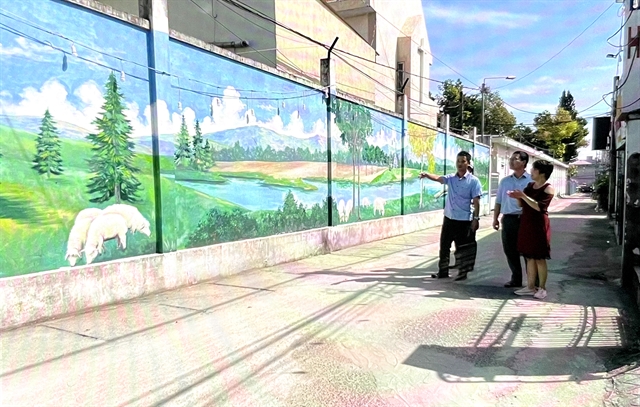Đồng Nai Province strides ahead with building new-style rural areas
Society – Economy - Ngày đăng : 08:25, 30/08/2024
 |
| A rural road decorated with murals in Đồng Nai Province’s Thống Nhất District. – VNA/VNS Photo Hồng Nhung |
ĐỒNG NAI – Đồng Nai Province expects to spend VNĐ179 trillion (US$7.2 billion) on the national programme for building new-style rural areas this year.
The southeastern province got all its 120 communes recognised as new-style rural communes under the programme in 2019, and hopes to get all of them recognised as advanced new-style rural ones by 2025.
New-style rural communes must meet 19 criteria related to infrastructure, irrigation, electricity, environment, income, education, healthcare, social security and culture.
Advanced communes have to meet higher standards across those criteria.
The province had 106 meeting the advanced criteria as of the middle of this year, with 30 meeting the next higher – and highest as of now -- standards, those of exemplary new-style rural communes.
It had three new advanced and one new exemplary communes in the first half of the year.
Võ Văn Phi, deputy chairman of the province People’s Committee, said the new ones have been focusing on building infrastructure, improving people’s incomes and protecting the environment.
Đồng Nai is one of the country’s leading provinces in implementing the programme.
In April this year, Xuân Lộc was recognised as an advanced new-style rural district. In 2014 it had become the first new-style rural district in the country.
It now has nine of its 14 communes recognised as meeting exemplary norms.
Nguyễn Thị Cát Tiên, deputy secretary of the Xuân Lộc Party Committee and chairwoman of its People’s Committee, said the district had many poor communes when it started the programme.
This achievement is owed to the efforts of the district’s administration and people’s participation in the programme, she said.
Trần Tuấn Khanh, owner of the Ring-Neck Pheasant Farm in the district’s Xuân Phú Commune, said his locality has changed and increasingly developed in all aspects.
Its socioeconomic development was most vigorous after adopting the programme, he suggested.
The district’s per capita income was VNĐ90 million ($3,600) last year, higher than the province’s, according to the district Party Committee.
The programme has improved lives in rural areas, especially for ethnic people.
Xuân Lộc’s Xuân Hưng Commune, Hamlet 4 has nearly 3,000 Chăm people.
Mo Ha Mach A Mine, head of Hamlet 4 and secretary of its Party Cell, said: “With the assistance of local authorities, the Chăm people in Hamlet 4 have adopted advanced techniques for growing perennial trees and breeding livestock.”
The programme has significantly improved the lives of local people and the hamlet looks green, clean, and beautiful, he said.
Many Chăm people in Hamlet 4 have annual incomes of hundreds of millions of đồng to a billion, he said.
The programme has helped achieve social security and reduce traffic accidents, and children have a safe place to play at the hamlet’s cultural house, he said.
Voluntary participation
Local people have voluntarily participated in the programme and donated land, money and labour for building the new-style rural areas.
Phạm Văn Ray, a member of the Quang Trung Commune Farmers Association in Thống Nhất District, has donated nearly 1ha of land worth VNĐ10 billion ($400,000) and VNĐ500 million ($20,000) in cash to build a road in Lạc Sơn Hamlet that helps hundreds of households travel easier and improve the prices of their agricultural produce as traders can easily travel to their fields.
He has also donated hundreds of millions of đồng for installing electricity lines in his own locality.
He was awarded the Prime Minister’s Merit Certificate for following Hồ Chí Minh's thoughts, morality and lifestyle on the occasion of Uncle Hồ’s birthday on May 19 this year.
The province has effectively mobilised local residents for the programme with its motto that people are both the subject and beneficiary of new-style rural areas.
Lê Văn Gọi, deputy director of the province Department of Agriculture and Rural Development, said localities have also creatively selected suitable models to develop agriculture, protect the environment and preserve their culture. – VNS
